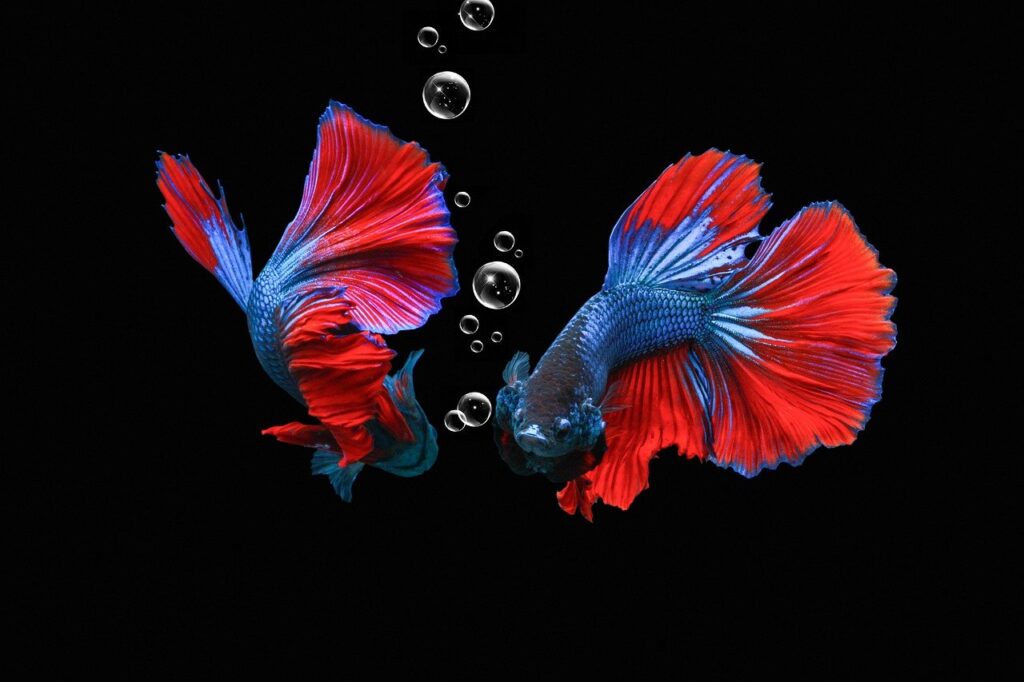
Complete Betta Fish Care Guide for Beginners

Setting up a Betta fish aquarium can be a delightful experience, combining creativity and care. Known for their vibrant colors and unique personalities, Betta fish are a popular choice among beginners. However, creating a healthy environment for them requires proper knowledge and planning. In this guide, we’ll provide practical tips to help you set up and maintain a thriving Betta fish aquarium while avoiding common mistakes. This complete Betta fish care guide for beginners will set you on the right path.
Choosing the Right Tank for Betta Fish
Selecting the right tank is crucial for your Betta’s well-being. While smaller tanks might seem convenient, a tank of at least 5 gallons is recommended for optimal health and comfort.
- Why size matters: Larger tanks provide more stable water conditions and reduce stress on your fish.
- Tank shape: Betta fish prefer tanks with ample horizontal swimming space.
- Avoid bowls: Bowls lack filtration and temperature regulation, making them unsuitable for Betta fish.
Key Tip:
Use a tank designed for Betta fish to ensure their specific needs are met.
Setting Up the Betta Fish Tank
An ideal Betta fish tank setup includes essential equipment to maintain a stable environment:
- Filter: Helps remove waste and toxins, keeping the water clean.
- Heater: Maintains a water temperature of 76-82°F, ideal for tropical Betta fish.
- Lighting: Enhances the tank’s appearance and supports live plant growth.
- Substrate: Use gravel or sand to mimic a natural habitat.
Pro Tip:
Place the tank on a sturdy surface away from direct sunlight to prevent temperature fluctuations and algae growth.
Decorating the Tank
Creating a comfortable and engaging environment for your Betta is essential:
- Plants: Live plants like Java Fern or Anubias not only enhance aesthetics but also improve water quality.
- Hiding spots: Add caves, driftwood, or smooth decorations for your Betta to explore and hide.
- Safety first: Ensure all decorations have smooth edges to prevent fin damage.
Cycling the Tank Before Adding Betta Fish
Cycling establishes beneficial bacteria that break down harmful waste products. Follow these steps to cycle your tank:
- Set up the tank with water, substrate, and decorations.
- Add an ammonia source (fish food or ammonia drops).
- Test water parameters weekly using an aquarium test kit.
- Wait 4-6 weeks until ammonia and nitrite levels drop to zero.
Pro Tip:
Use bottled beneficial bacteria to speed up the cycling process. This step is essential in any Betta fish tank setup.
Choosing the Right Betta Fish
Selecting a healthy Betta fish is key to a successful start:
- Look for signs of health: Vibrant colors, active swimming, and clear eyes.
- Avoid: Fish with clamped fins, discoloration, or signs of illness.
Pro Tip:
Acclimate your Betta to the new tank gradually to minimize stress and ensure their comfort in the new Betta fish tank setup.
Feeding Betta Fish
A balanced diet is essential for Betta fish health:
- Diet: High-quality Betta pellets, freeze-dried bloodworms, and occasional treats.
- Feeding frequency: Feed 2-3 times a day in small portions that your Betta can consume within 2-3 minutes.
- Avoid overfeeding: Excess food can pollute the water and harm your fish.
Common Question:
How often should you feed Betta fish? Ideally, 2-3 times daily in controlled portions to avoid overfeeding.
Maintaining Water Quality
Consistent maintenance ensures a healthy environment:
- Perform weekly partial water changes (20-25%) to remove waste and toxins.
- Use a water conditioner to neutralize chlorine and harmful chemicals.
- Regularly test water parameters for pH, ammonia, nitrites, and nitrates.
Pro Tip:
A pH level between 6.5 and 7.5 is ideal for Betta fish and contributes to a balanced aquarium.
Monitoring Betta Fish Health
Keep an eye on your Betta’s behavior and appearance to spot any issues early:
- Signs of good health: Active swimming, vibrant colors, and a healthy appetite.
- Common issues: Watch for symptoms of fin rot, ich, or swim bladder problems.
- Prevention: Maintain water quality and provide a stress-free environment.
Common Mistakes to Avoid
Avoid these pitfalls to ensure your Betta’s health and happiness:
- Overcrowding the tank or choosing incompatible tankmates.
- Skipping the tank cycling process.
- Using untreated tap water.
- Neglecting regular maintenance tasks.
Pro Tip:
Research thoroughly before making any changes to your tank setup. Remember, proper Betta fish care is an ongoing process.
Conclusion
Setting up your first Betta fish aquarium can be a rewarding experience. By following these tips, you can create a beautiful, healthy environment that both you and your Betta will enjoy. Ready to begin your Betta fish journey? Explore our directory to find the best aquarium shops near you, and let’s make your aquarium dreams a reality!